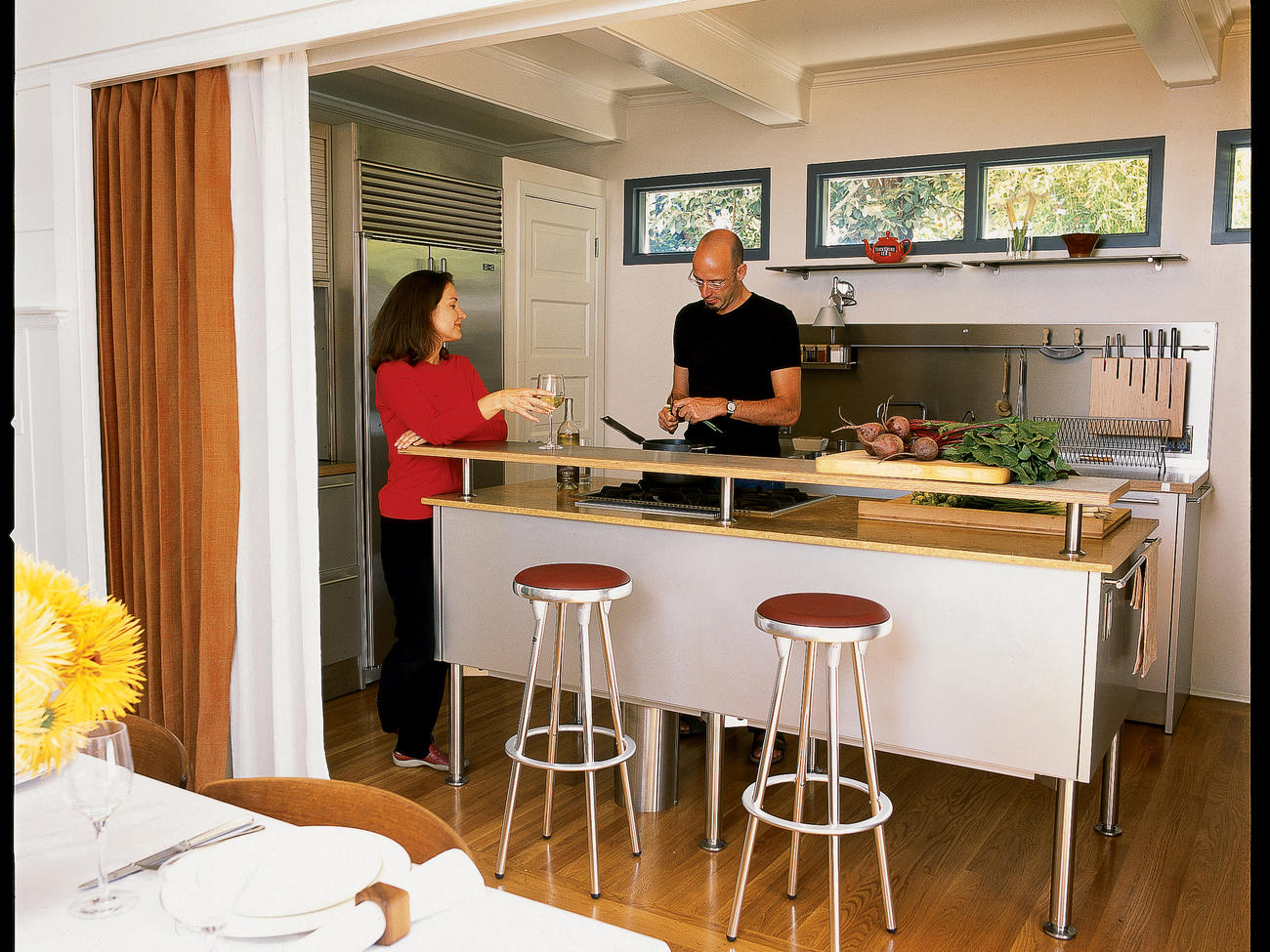Curtained kitchen

“Mark dreams of being a TV chef,” says Doris Mitsch of her husband, Mark Barden.
He loves to cook for guests and when he does, the beet juice flies. “Guests expect it to be quite a show,” says Mitsch.
The couple wanted to make it possible for Barden to interact with guests while he’s preparing their meal. But, as Mitsch says, “We liked the adjacent formal dining room and didn’t want to look at big piles of pots and pans.”
Architect Kurt Melander devised an ingenious solution: He opened up the wall between the two spaces and installed curtains as dividers to screen the kitchen when necessary. Normally, they’re pulled back to create one bright, airy room.
Melander duplicated the dining-room beams in the kitchen to draw the spaces together. The beams, which are painted the same color as the ceiling, provide texture and definition without breaking up the space.
At the center of the kitchen is an island containing the stove and oven. It’s treated as a freestanding piece of furniture, which adds to the feeling of spaciousness.
The island is Barden’s favorite aspect of the design. “When cooking, it lets me face the room,” he says. “It pulls me into the conversation and allows guests to be involved in what I’m doing.”
New French doors create an easy connection to the deck and garden. “We couldn’t even see the garden before,” explains Mitsch.
Cabinet doors roll up and down instead of swinging out. “We don’t have to ask people to move so that we can open them,” says Mitsch. And there are compartments and drawers for dishware, utensils, and appliances.
When the cooking is done, Mitsch and Barden can pull one of two curtains. “The white curtain is so glamorous,” says Barden. “When the lights are on in the kitchen, the curtain is backlit, and it glows.”
The other curtain, a heavier fabric in a rust color, is reserved for cold winter nights―”when we want to hunker down and get cozy,” explains Barden.
Design: Melander Architects Inc., San Francisco (melanderarchitects.com or 415/981-7087)